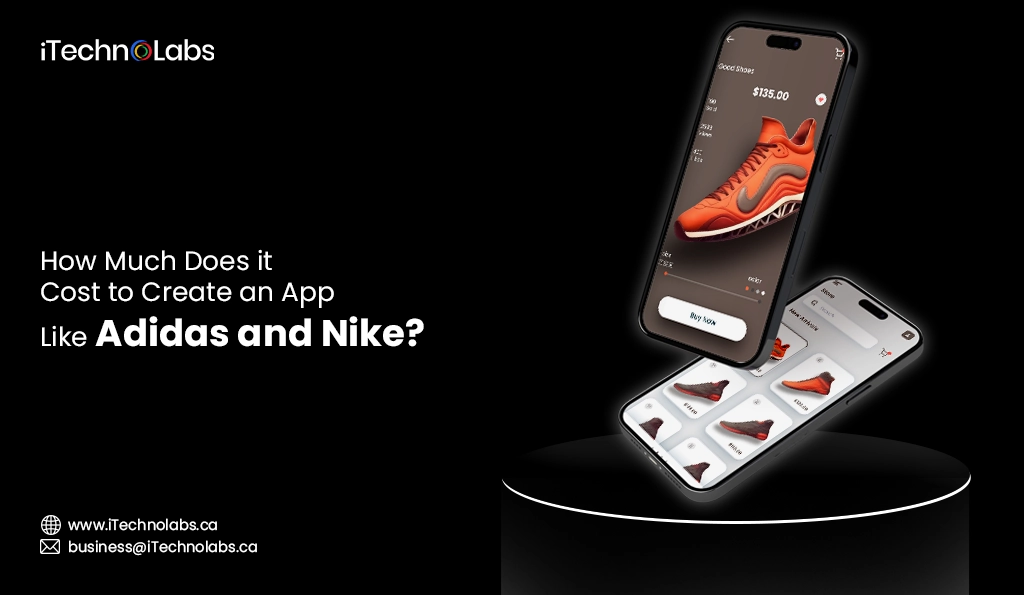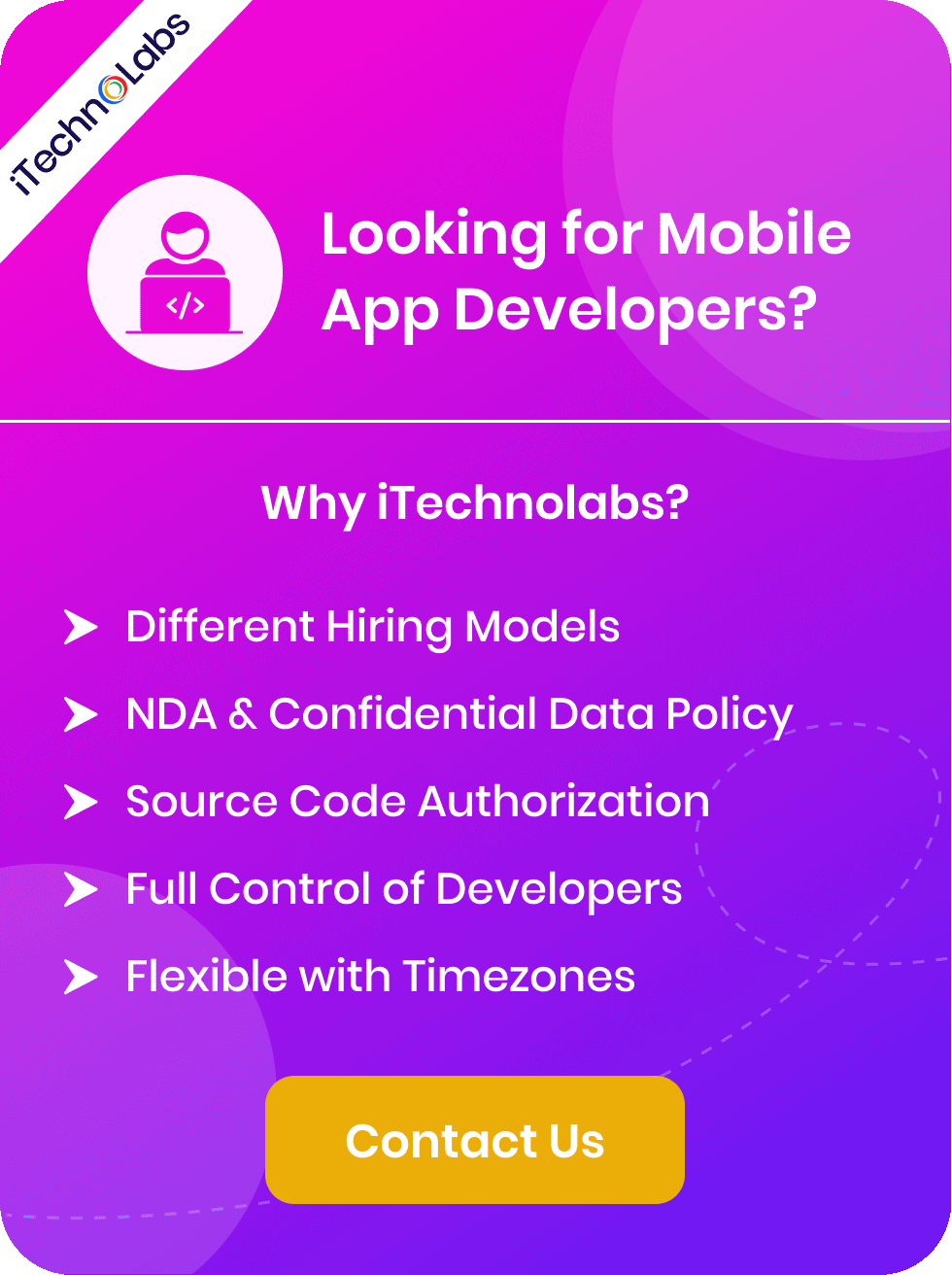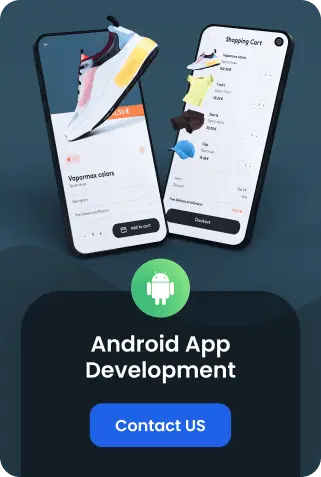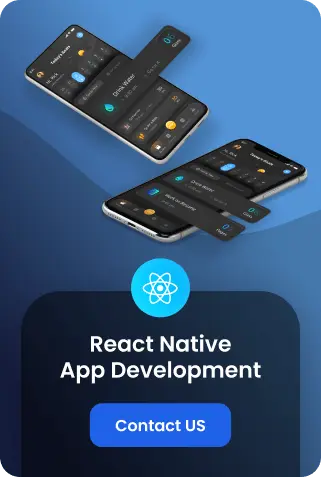After delving into the numerous components necessary for developing an application like Adidas, which includes not only user interface design that ensures a seamless and engaging user experience, but also back-end development that supports the application’s performance, along with the integration of e-commerce functionalities to facilitate online transactions, it becomes imperative to address the development cost estimation for such a comprehensive project. This estimation process is not trivial; precise cost estimation is of utmost importance as it plays a pivotal role in effective budgeting and resource allocation. This, in turn, ensures that the project can proceed smoothly without financial hiccups, avoiding any potential interruptions that could derail progress.
Understanding the financial aspect of app development early on is crucial. It significantly aids in planning by providing a clear picture of the required investment, thus preventing unexpected expenses that could inflate the budget unexpectedly and ensuring that the project stays on track both timewise and financially. Furthermore, a detailed financial plan helps in securing potential investment by presenting a well-thought-out strategy to investors, showing them the project’s viability and the efficiency of its financial management. In summary, diving deep into the cost estimation and financial planning from the outset is essential for the success of developing an application of this scale, ensuring that it not only meets its designed functional specifications but is also delivered within budget and on schedule.
Why Build an eCommerce App Like Adidas or Nike
The fashion and retail landscape has undergone an extraordinary transformation, primarily driven by the explosive growth of e-commerce. According to detailed data from Statista, global retail eCommerce sales skyrocketed to an impressive 4.28 trillion US dollars in 2020, marking a significant milestone in the industry’s evolution. Furthermore, projections indicate a steep upward trajectory, with sales expected to escalate to 5.4 trillion by the end of 2022. This remarkable surge in digital shopping has fundamentally altered consumer purchasing behaviors and revolutionized the traditional retail model.
This burgeoning trend towards online shopping has not only reshaped how consumers approach the purchase of goods but has also forced many well-established brands to rethink their strategies. Notable industry giants, such as Adidas and Nike, have been at the forefront of this innovation wave. Recognizing the immense potential and the changing dynamics of the digital marketplace, these companies have invested heavily in the development of state-of-the-art eCommerce applications. These applications stand out for their highly intuitive user interfaces and seamless shopping experiences, explicitly designed to meet the modern consumer’s demands for convenience, speed, and efficiency while shopping online.
Moreover, these forward-thinking brands have leveraged advanced technologies, such as artificial intelligence and machine learning, to personalize the shopping experience, offering product recommendations based on individual consumer preferences and browsing history. This strategic emphasis on digital engagement through social media platforms has also played a crucial role in enhancing brand visibility and customer loyalty.
The strategic pivot towards embracing eCommerce platforms by leading fashion and retail brands signifies a pivotal shift in the industry. It underscores the critical importance of digital adaptation for staying relevant and competitive in today’s fast-paced and ever-changing market environment. As we move forward, the continued integration of technology in retail will undoubtedly pave the way for more innovative and immersive shopping experiences, further blurring the lines between physical and digital retail spaces.
Also Read: Understanding eCommerce in Simple Terms
Factors Influencing the Cost of Building an eCommerce App Like Adidas and Nike
The process of developing an eCommerce application can be complex, time-consuming, and costly. Several factors influence the cost of building an app like Adidas or Nike, including:
Complexity of Features
The complexity of an app’s features directly influences the development costs. Major brands like Adidas and Nike have developed highly sophisticated eCommerce apps that boast a plethora of advanced features. These include personalized product recommendations, which use algorithms to suggest items based on a user’s browsing and purchase history; real-time inventory tracking, which ensures that the stock levels displayed to the user are always accurate; and integrated payment gateways, which provide seamless checkout experience by supporting a wide range of payment methods. Developing these advanced features is no small feat. It requires a significant investment of time and resources, including a skilled development team and the latest technology. Consequently, the more complex the app, the higher the overall development cost.
Platform Selection
Another factor that influences the cost of building an eCommerce app is the platform on which it will be built. There are several platforms available, each with its own set of advantages and limitations. For example, native apps are specifically designed for a particular operating system (e.g., iOS or Android) and offer the best performance and user experience but require separate development for each platform. Hybrid apps, on the other hand, can be built using a single codebase and deployed across multiple platforms, making them more cost-effective but potentially sacrificing some performance. Deciding on the right platform for an eCommerce app is crucial as it can significantly impact development costs.
Security Measures
In the realm of eCommerce app development, besides selecting a platform and integrating advanced features, a paramount aspect that cannot be overlooked is security. Given the exchange of sensitive personal and financial information during online transactions, it becomes crucial to employ stringent security measures to safeguard user data against potential breaches. This security protocol involves the incorporation of secure payment gateways, which facilitate safe transactions, and encryption protocols that ensure data is transferred securely. Moreover, conducting regular security audits is essential to identify and rectify vulnerabilities, maintaining the integrity of the app. However, it’s important to note that these enhanced security measures entail additional costs. This includes the investment in high-quality security software, hiring experts for regular audits, and the ongoing maintenance required to keep the security measures up-to-date. These factors further contribute to the overall development cost of an eCommerce app, making security a significant investment in the pursuit of providing a safe and reliable platform for users.
Project Timeline
Developing an eCommerce app is a multifaceted and complex process that necessitates detailed planning and precise execution. The project timeline for creating an eCommerce app can significantly vary, primarily depending on the platform selected, the intricacy and number of features desired, as well as the extent of customization required to meet specific business needs. On average, the development of an eCommerce app may span from 4-6 months to a complete year. This comprehensive timeline includes the initial stages of meticulous analysis and design, where the app’s framework and user experience are mapped out. Following this, the development and testing phases occur, involving rigorous coding, debugging, and validation to ensure the app’s functionality and performance meet high standards. Finally, the process culminates in the launch of the app, marking the beginning of its availability to users and the start of ongoing maintenance and update cycles to keep the app current and engaging.
Third-Party Services and Tools
In addition to mapping out a development timeline, constructing an eCommerce app requires the integration of several third-party services and tools to ensure a seamless and efficient operation. These external resources can vary widely, encompassing payment gateways to facilitate secure transactions, shipping solutions to manage the distribution of goods, analytics platforms to monitor and analyze user behavior, customer service support systems to address inquiries and issues, and much more. Incorporating these services is not merely about adding features; it’s about enhancing the overall functionality and user experience of the app, making it more appealing and user-friendly. However, while these third-party services can significantly improve an eCommerce app’s efficiency and appeal, they also introduce additional layers of cost and complexity to the project. Each service comes with its own set of integration challenges and expenses, which can accumulate and impact the project’s budget and timeline. Therefore, it’s imperative for developers and project managers to not only carefully select these services but also strategically integrate them into the app.
Scalability Requirements
Another critical aspect to consider when building an eCommerce app is scalability. As the app’s popularity and user base grow, it must be able to handle the increased traffic and demands without affecting its performance or functionality. This challenge necessitates a solid infrastructure that can scale seamlessly as needed, accommodating spikes in usage without compromising on speed or user experience. Developers should employ highly scalable technologies and architectures, such as cloud-based services and microservices, to ensure that the app can support a growing number of users, transactions, and data without any significant disruptions. Utilizing these technologies allows for more flexible scalability, enabling the app to expand its resources dynamically in response to real-time demand. Additionally, implementing effective database management and caching strategies can significantly enhance the app’s scalability by optimizing data retrieval processes and reducing the load on the server. Regular load testing and performance monitoring are also indispensable practices. They help identify potential bottlenecks and inefficiencies in the app’s infrastructure, allowing developers to address them proactively before they escalate into major issues.
Location of the Developers
The location of the developers involved in building an eCommerce app can also play a crucial role in its success. With the rise of global remote work and outsourcing, it’s now possible to hire skilled developers from anywhere in the world. However, working with a team located in different time zones or countries comes with its own set of challenges, such as communication barriers and cultural differences. Therefore, it’s essential to establish clear communication channels and processes that work for all team members and foster a collaborative environment. Additionally, developers should also consider the data privacy laws and regulations in their chosen location to ensure compliance with industry standards.
Must-Have Features for an eCommerce App Like Adidas and Amazon
To compete with successful eCommerce giants like Adidas and Amazon, an app must have certain essential features that provide a seamless user experience. These features include:
User-friendly Product Search and Filters
Users should have the capability to effortlessly search for the products they desire by utilizing a straightforward search function. Additionally, they should be able to apply various filters to refine their search results according to specific criteria such as price, brand, and ratings. This feature significantly enhances the user experience by allowing them to quickly identify and locate the exact products they’re interested in. As a result, this efficiency not only improves user satisfaction but also significantly increases the likelihood of a successful purchase by making the shopping process more convenient and tailored to individual needs.
Product Comparison Tools
Another indispensable feature for any eCommerce application is the product comparison capability. This invaluable tool empowers users to place different products side by side, facilitating a comprehensive analysis. It enables shoppers to weigh their options carefully, making choices that align perfectly with their unique preferences and needs. By utilizing product comparison tools, users gain access to detailed insights regarding the variations between products, including nuanced differences in pricing and specifications. This not only enhances the shopping experience by simplifying the decision-making process but also ensures that customers can easily identify and select the best possible option that meets their specific requirements. This feature is essential in fostering a user-friendly environment, encouraging more informed and satisfying purchasing decisions.
Product Recommendation Algorithm
In recent years, the use of artificial intelligence (AI) and machine learning has revolutionized the eCommerce industry. One of the most significant applications of these technologies is in product recommendation algorithms. This advanced feature analyzes user behavior, purchase history, and browsing patterns to suggest products that align with their interests and preferences.
By leveraging AI and machine learning, online retailers can provide personalized recommendations that enhance the overall shopping experience. This benefits both customers, who receive tailored and relevant product suggestions, and businesses, which can increase sales and improve customer satisfaction.
User Account Personalization
In addition to personalized product recommendations, online stores also offer users the option to create a personal account. This feature allows shoppers to save their preferences and purchase history, making it easier for them to continue shopping where they left off. By creating an account, customers can also track orders, receive notifications about sales and discounts, and benefit from faster checkouts.
Moreover, user accounts enable businesses to collect valuable customer data, analyze it, and use it to improve their marketing strategies. This data can also be used to personalize the shopping experience further by offering targeted promotions and discounts based on a user’s preferences and behavior.
Wishlist and Shopping Cart Management
Another essential component of recommendation algorithms is the use of wishlists and shopping carts. By saving products to a wishlist, customers can keep track of items they are interested in purchasing but may not be ready to buy yet. This feature also allows businesses to send notifications or reminders about these products, increasing the chances of conversion.
Similarly, shopping carts act as a virtual carts for users to place items they intend to purchase. They can add or remove products from their cart at any time, and the system will update the total price accordingly. This feature not only improves the user experience but also allows businesses to track which products are popular and adjust their inventory accordingly.
AI-Powered Fashion Stylists
Many online stores, particularly in the fashion industry, are now incorporating AI-powered fashion stylists to offer personalized product recommendations to their customers. These systems use machine learning algorithms to analyze a user’s style preferences and make tailored product suggestions.
AI-powered fashion stylists take into account factors such as body type, skin tone, and previous purchase history to suggest products that will fit the customer’s style and needs. This feature not only improves the shopping experience but also increases customer satisfaction and loyalty.
Order Tracking and Shipping Updates
Recommendation algorithms are revolutionizing the customer experience in numerous ways, one of which includes the integration of order tracking and shipping updates. By seamlessly integrating with sophisticated logistics systems, businesses are now able to offer customers up-to-the-minute updates on the status of their orders, along with precise estimates of delivery times.
This innovative feature serves not just to keep customers well-informed about the journey of their purchases from warehouse to doorstep but also plays a crucial role in managing customer expectations. In the dynamic world of e-commerce, where unexpected delays and issues can arise, the ability to provide real-time information is invaluable. It allows businesses to maintain transparency with their customers, building trust and loyalty.
Moreover, in situations where shipments encounter delays or other logistical challenges, this advanced integration enables businesses to proactively reach out to customers. They can communicate the issue at hand and immediately offer alternative solutions or compensatory measures, thus mitigating any potential dissatisfaction. This proactive approach not only ensures a positive customer experience but also strengthens the relationship between the business and its customers, reinforcing its commitment to customer satisfaction and service excellence.
Secure Payment Tokenization
In addition to enhancing the customer experience, recommendation algorithms are also making strides in securing online transactions. With the rise of e-commerce and online shopping, concerns over the security of personal and financial information have become a top priority for businesses and customers alike. To address this issue, recommendation algorithms now utilize secure payment tokenization.
Payment tokenization is a process that replaces sensitive data, such as credit card numbers, with a unique randomly generated code or token. This token is then used for the transaction instead of the actual sensitive data. As a result, even if a hacker were to intercept the transaction, they would only obtain the useless token instead of valuable personal and financial information.
Size and Fit Guide with 3D Models
Another way that recommendation algorithms are improving the online shopping experience is through size and fit guides. One of the biggest challenges with online shopping is not being able to try on clothes or shoes before making a purchase. This often leads to returns and exchanges, which can be time-consuming and frustrating for both customers and businesses.
To address this problem, some e-commerce sites now offer 3D models of clothing and shoes, allowing customers to see how the item would look and fit on their bodies. In addition, size and fit guides use data from previous purchases by customers with similar body types to recommend the best size for a particular item. This not only saves time and reduces returns but also increases customer satisfaction.
Loyalty Points and Rewards Tracking
To keep customers coming back, many businesses now offer loyalty programs that reward customers for their purchases. In the past, keeping track of these rewards and points could be a hassle for both customers and businesses. However, recommendation algorithms have stepped in to streamline this process.
By tracking customer purchases and preferences, recommendation algorithms can automatically apply loyalty points and rewards to their account. This not only makes the shopping experience more convenient for customers but also encourages them to continue shopping with the same business to earn more rewards. Additionally, by analyzing customer data, these algorithms can make personalized recommendations for rewards and promotions that are most relevant to each customer.
Product Authentication Technology
One significant concern that shoppers face with online shopping is the heightened risk of encountering and inadvertently purchasing counterfeit products. This issue not only affects the consumer’s wallet but can also harm the reputation of genuine brands. To tackle this challenge head-on, numerous e-commerce platforms have started to incorporate advanced technological solutions, such as blockchain networks and AI-driven algorithms, to ensure the products they offer are authentic.
By implementing unique product codes that can be easily tracked and verified, along with sophisticated tracking systems, businesses can meticulously verify the authenticity of every single item that passes through their supply chain. This level of scrutiny provides customers with a much-needed peace of mind when making purchases online, knowing that the items they receive are genuine and of the quality they expect.
In-App AR Shopping Experience
The rise of augmented reality (AR) technology has also greatly impacted the online shopping process. Businesses have started to integrate this advanced technology into their shopping apps, providing customers with an immersive and interactive experience like never before. With AR, shoppers can virtually try on clothes and accessories, visualize furniture in their home before purchasing, or even test out different makeup looks.
This not only enhances the customer’s overall shopping experience but also reduces the likelihood of returns and exchanges, as they can see how the product will look and fit before making a purchase. Furthermore, with the integration of AI technology, these AR experiences can be tailored to each customer based on their preferences and past purchases.
Multilingual and Multi-Currency Support for International Markets
With the rise of e-commerce, businesses are no longer limited to selling in their local markets. Online shopping has made it possible for companies to reach a global audience and tap into new markets. However, this also presents challenges such as language barriers and varying payment methods.
To cater to international customers, many businesses have implemented multilingual support on their websites and apps, providing translations for different languages. They have also added multi-currency support, allowing customers to make purchases in their local currency without having to worry about conversion rates.
Real-Time Stock Availability Updates
One of the biggest frustrations for online shoppers is adding an item to their cart, only to find out it’s out of stock during checkout. This can lead to a negative shopping experience and possibly lose customers.
To combat this issue, businesses have implemented real-time stock availability updates on their websites and apps. This means that customers can see if an item is in stock before even adding it to their cart. This not only saves time but also increases transparency and trust between the customer and the business.
Customer Engagement through Social Media
In today’s digital age, social media has become a powerful tool for businesses to engage with their customers. Online shoppers often turn to social media platforms to research products, read reviews, and interact with brands.
To take advantage of this trend, businesses have integrated social media into their e-commerce strategies. This includes running ads on social media platforms, creating engaging content to showcase products, and providing customer support through direct messaging. This not only helps increase brand awareness but also allows for better communication with customers.
User-Generated Content Integration
Customers today are more likely to trust and make a purchase based on recommendations from other customers rather than traditional advertising. This is where user-generated content comes into play.
Businesses have started integrating user-generated content, such as customer reviews, ratings, and social media posts, into their e-commerce platforms. This not only showcases real experiences and feedback from customers but also helps build brand trust and credibility.
Read More: Role of AI in Retail and E-commerce Industry
The Process of Developing an App Like Adidas
Developing an app similar to Adidas involves several stages and requires a dedicated team of developers, designers, and project managers. The following are the general steps involved in creating an e-commerce app like Adidas:
Market Research and Analysis
The initial phase in creating an application akin to Adidas involves engaging in comprehensive market research and analysis. This critical step encompasses an in-depth examination of the target demographic, including their preferences and behaviors, alongside a detailed comparison of competitors’ strengths and weaknesses. Furthermore, it requires staying abreast of the latest trends in e-commerce and technology advancements, to ensure the app meets current consumer expectations and stands out in the competitive market. Gathering this information will provide a solid foundation for developing a successful app that resonates with users and maintains relevance in a rapidly evolving digital landscape.
User Experience Design
User experience (UX) design holds paramount importance in the development of an e-commerce app, such as Adidas Confirmed. This aspect of app development is not just about making the app look appealing; it’s about crafting an engaging and seamless journey for the users from the moment they download the app. The role of UX design is multifaceted, directly influencing the ability of the application to attract and retain customers by providing them with a positive and memorable experience.
The process begins with the meticulous creation of wireframes and prototypes. These initial steps are crucial as they lay the foundation for how users will navigate and interact with the app. It’s during this stage that designers can experiment with different layouts and flows to determine the most intuitive and efficient user pathways. By visualizing the user’s journey through wireframes and prototypes, designers ensure that the app is not only functional but also user-centric, catering effectively to the needs and preferences of its target audience.
Furthermore, the UI/UX design encompasses the development of an attractive and user-friendly interface. This involves a careful consideration of various factors such as navigation, ease of use, and visual appeal. A well-designed interface goes beyond just good looks; it ensures that users can find what they’re looking for with minimal effort and that the app’s aesthetics contribute to a pleasing and engaging user experience. Through thoughtful design choices, such as the use of color, typography, and imagery, designers can evoke emotions and drive user engagement.
Backend Development and Database Setup
In addition to creating an aesthetically pleasing and user-friendly interface, the development of a robust backend infrastructure is crucial for the success of any app. This involves setting up databases, servers, and APIs that enable the app to function properly and securely.
Database setup is a critical aspect of backend development as it stores and manages all the data that users interact with within the app. This includes user information, app content, and any other data that is necessary for the app’s functionality. Choosing the right database structure and implementing efficient querying methods are essential for ensuring optimal performance of the app.
Backend developers also need to consider server setup and management. This involves selecting a hosting provider, configuring servers, and setting up monitoring systems to ensure that the app runs smoothly and can handle a high volume of traffic.
Additionally, developers need to create APIs (Application Programming Interfaces) that allow for communication between different components of the app. This enables data sharing and ensures that all features of the app work together seamlessly.
Front-end Development and Features Integration
Front-end development involves the creation of the user interface and the implementation of all design elements. This includes coding in languages such as HTML, CSS, and JavaScript to bring the app’s visual design to life.
Integrating features within the app requires a deep understanding of both front-end and back-end development. Features such as user authentication, push notifications, and in-app purchases require careful integration of code from both the front end and backend to work smoothly.
Front-end development also involves testing and debugging to ensure that the app functions as intended on different devices and browsers. This requires attention to detail and a thorough understanding of cross-browser compatibility.
Testing and Quality Assurance
To ensure a high-quality app, thorough testing and quality assurance processes must be in place. This includes both manual and automated testing to identify any bugs or issues with the app.
Manual testing involves using the app as an end-user would, trying out different features and scenarios to identify any errors or inconsistencies. Automated testing uses tools and scripts to test specific functions of the app and identify errors in code.
Quality assurance involves reviewing the app’s functionality, design, and user experience to ensure it meets the specified requirements. This also includes making any necessary changes or improvements based on feedback from beta testers or users.
Launch, Marketing, and Post-launch Optimization
Once the app is developed and tested, it’s time to launch it in the market. This involves creating a marketing strategy to promote the app and attract users. This can include social media campaigns, influencer partnerships, and advertisements.
Post-launch optimization is also crucial for the success of an app. This involves gathering user feedback and making necessary updates or improvements to the app based on this feedback. It’s important to continuously monitor and improve the app to keep up with changing technologies and user needs.
How much does it cost to build an app like Adidas?
Building an app like Adidas, which likely features advanced eCommerce capabilities, personalized user experiences, and possibly AR (Augmented Reality) to try products virtually, can be a substantial investment. The cost typically ranges from $100,000 to $500,000 or more, depending on the complexity, features, and customization involved. Key factors influencing the price include the app’s design intricacy, backend infrastructure, third-party service integrations, data security measures, and whether the app is developed for multiple platforms (iOS, Android, web). Additionally, the geographical location of the development team can significantly affect the overall cost, with agencies in North America and Western Europe often charging more than those in other regions.
Cost Breakdown for Building an App like Adidas
- App Design Complexity: The more complex and user-friendly the design, the higher the cost. This can range from $10,000 to $80,000.
- Backend Infrastructure: Vital for app functionality, including servers and databases. Costs can vary between $25,000 and $400,000.
- Feature Complexity: Advanced features like AR, personalization, and eCommerce capabilities can push costs upwards of $50,000 to $250,000.
- Third-Party Integrations: Payment gateways, social media, and other integrations add to the cost, potentially $5,000 to $50,000.
- Data Security: Ensuring user data protection and compliance with regulations like GDPR can increase costs by $20,000 to $40,000.
- Multi-Platform Development: Developing for iOS, Android, and web simultaneously can double or triple the development costs.
- Geographical Location of Developers: Rates vary significantly by region, with North American and Western European developers charging $100 to $250 per hour, whereas Eastern Europe and Asia may charge $35 to $75 per hour.
Suggested: How Much Does it Cost to Create An App
How can iTechnolabs help you build an app like Adidas?
At iTechnolabs, we have a team of experienced developers and designers who are well-equipped to handle the complexities involved in building an app similar to Adidas. Our expertise in app design, backend infrastructure development, and integration with third-party services can ensure that your app is not only visually appealing but also functional and secure.
We understand that every business has different needs and budget constraints, which is why we offer customizable solutions to fit your specific requirements and budget. Our team also stays updated with the latest industry trends and technologies, ensuring that your app incorporates the most innovative features.
- Customized Solutions: Tailored app development services that are meticulously designed to align with your unique business needs and vision, ensuring that the final product stands out in the market.
- Expert Team: Gain direct access to a dedicated team of highly skilled developers, creative designers, and experienced project managers, all of whom possess deep expertise in crafting high-performance apps that not only meet but exceed expectations.
- Innovative Features: Our development process includes the incorporation of the latest technologies and innovative features, such as augmented reality (AR) capabilities, personalization options tailored to user preferences, and comprehensive eCommerce functionalities, ensuring your app remains competitive and cutting-edge.
- Cost Efficiency: We offer competitive pricing models designed to provide you with the utmost value for your investment. Our approach includes complete transparency in all costs associated with the development, integration, and deployment of your app, ensuring no hidden fees.
- Security Compliance: We prioritize the security of your app by ensuring it complies with all necessary data protection and privacy regulations, including the General Data Protection Regulation (GDPR). This commitment helps to protect user information and build trust with your app users.
- Multi-Platform Development: Our capability extends to developing applications across various platforms, including iOS, Android, and the web, allowing you to reach a broader audience and provide seamless user experiences regardless of the device or operating system.
- Ongoing Support and Maintenance: Beyond the initial launch, we provide continuous support and regular updates to ensure your app remains functional, efficient, and updated with the latest features and security measures. This ongoing commitment helps to maintain optimal app performance and user satisfaction.
Are you planning to build an app like Adidas?
Choosing iTechnolabs for building an app like Adidas brings several unparalleled advantages to the forefront. With our expertise in integrating Innovative Features, we can create a sports and fitness app that not only includes personal tracking and performance analysis tools but also leverages AR capabilities for a virtual try-on experience, mirroring Adidas’ commitment to innovation. Our Cost-efficiency approach ensures that developing a high-quality app is economically feasible, providing you with a substantial return on investment. Security Compliance is paramount, especially when handling user data and payment information, ensuring your app builds trust from the outset. The ability to engage in Multi-Platform Development means that your Adidas-like app will reach the widest possible audience, whether they use iOS, Android, or web platforms.
- Breadth of Expertise: iTechnolabs brings a wealth of knowledge across different technologies and platforms, ensuring a robust, scalable, and dynamic Adidas-like app that stands out in the market.
- Customization and Personalization: We focus on creating customized experiences tailored to the specific needs and preferences of your target audience, increasing engagement and user satisfaction.
- Advanced Security Measures: With an emphasis on security compliance, iTechnolabs implements cutting-edge security protocols to protect user data and enhance the credibility of your app.
- Cost-Effective Solutions: Our strategic approach to development ensures that you receive a high-quality product without overspending, ensuring a better ROI for your project.
- Continuous Innovation: Leveraging the latest trends and technologies, such as AR for virtual try-ons, iTechnolabs ensures your app remains competitive and relevant in the fast-evolving app landscape.
- Seamless Multi-Platform Experience: With expertise in iOS, Android, and web development, we guarantee a consistent and engaging user experience across all devices, maximizing your app’s reach and impact.
- Dedicated Support and Maintenance: Our commitment extends beyond the launch, with ongoing support and updates to keep your app at the forefront of technology and user preferences.
Important: How to Build an Auction Website like eBay for Online Bidding?
Conclusion:
With iTechnolabs as your e-commerce app development partner, you can be confident in creating a top-of-the-line Adidas-like app that meets the demands and expectations of today’s users. Our comprehensive approach, expertise across platforms, advanced security measures, and commitment to innovation ensure a successful and impactful launch for your app. Trust us to bring your vision to life and elevate your brand in the competitive app market. Contact us today to get started on your journey toward creating a cutting-edge, user-centric Adidas-like app.
FAQs
1. How much does it cost to develop an Adidas-like app?
The cost of developing an app like Adidas can fluctuate widely, hinging on a multitude of factors. These include the distinct features you aim to include, the choice of platforms (iOS, Android, or both) where you intend to launch your app, and the overall intricacy of your project. Each of these elements plays a crucial role in determining the final development cost. For instance, integrating advanced features like artificial intelligence, augmented reality, or real-time tracking can significantly increase the project’s complexity and, consequently, its cost.
2. How long does it take to develop an Adidas-like app?
The estimated time to develop an app like Adidas can vary depending on the project’s scope and complexity. However, a typical development timeline can range from 3-6 months for a basic version with essential features to 6-12 months for a more advanced app with complex functionalities. Our team at iTechnolabs follows an agile development approach, ensuring timely delivery without compromising on quality.
3. What about post-launch maintenance?
At iTechnolabs, we believe in providing comprehensive support to our clients even after the app’s launch. We offer regular maintenance and updates to ensure your app functions smoothly and remains compatible with the latest technology upgrades. Additionally, we also provide ongoing support for any bugs or issues that may arise post-launch. Our goal is to help your app thrive in the competitive market and continuously evolve with the changing user demands.








